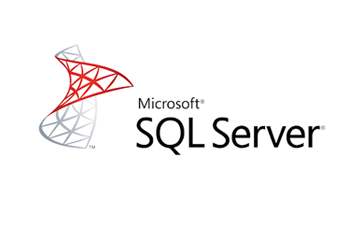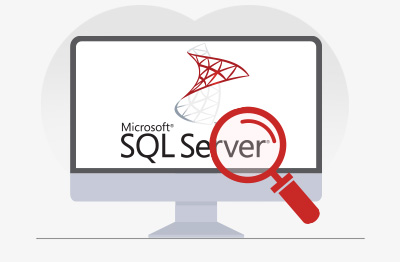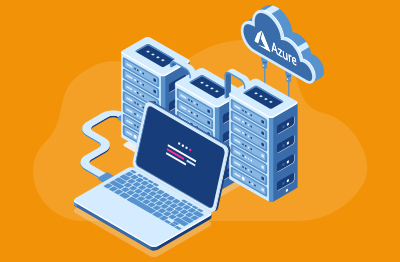Microsoft SQL Server
What is Microsoft SQL Server?
As we prepare to take a deep dive into Microsoft’s SQL Server, it is a pre-requisite to understand the answer to the surface-level question, “What is SQL Server?”. Many relational database management systems (RDBMS) are built on what is known as Structured Query Language (SQL), a standardized programming language that makes it easier for IT professionals and database administrators (DBAs) to manage your data and query information within a server.
With that said, what is Microsoft SQL Server, then?
Microsoft SQL Server is an RDBMS developed by Microsoft, the primary function of which is to store, manage, and retrieve data. You can use Microsoft SQL Server to support all sorts of important business processes, including analyzing large sets of data, understanding the minds of your customers, and making sure you are choosing the best path forward for your business.
T-SQL, which stands for Transact-SQL, is a proprietary variant of SQL developed by Microsoft. It is used to manage and manipulate data in Microsoft SQL Server databases.
Key features and capabilities of SQL Server
Microsoft SQL Server features an extensive set of components and capabilities, including:
As one of the most popular and established database technologies, it is relatively easy to find staff with the skills to deploy and maintain Microsoft SQL Server. There is also a wealth of community support and documentation available.
How does the Microsoft SQL Server work?
Microsoft SQL Server is a relational database system that stores structured data in tables within databases. SQL Server uses a combination of row-based and columnar storage, depending on the type of data and the context of usage. Traditional SQL Server tables typically store data in a row-based format. In this format, data for each row of a table is stored contiguously. This is the default storage format for most tables in SQL Server. SQL Server also supports columnar storage through the use of columnstore indexes.
Row-based storage is generally better suited for transactional processing, while columnar storage is ideal for analytical workloads that involve aggregations and reporting.
It uses the T-SQL language for data management and supports ACID transactions for data integrity. ACID (Atomicity, Consistency, Isolation, Durability) transactions mean that database transactions are atomic (indivisible), consistent (data remains in a valid state), isolated (transactions do not interfere with each other), and durable (committed data is persistent).
SQL Server optimizes queries, employs indexes and constraints, and offers features like stored procedures and triggers. It ensures data security through authentication and encryption and can scale both vertically and horizontally.
What is Azure SQL? migrating SQL Server to the cloud
Historically SQL Server has been widely deployed on-prem. Many organizations are now looking to leverage cloud infrastructure rather than maintain their own on-premises servers and infrastructure. For organizations looking to move to cloud-based infrastructure, Azure as part of the Microsoft ecosystem offers an easy and natural migration path. Azure SQL offers a range of options for migrating on-prem SQL servers. A detailed explanation of the options that range from lift-n-shift to fully managed cloud SQL services, is available here: Azure SQL Deployment Options: Making the Right Choice. Some advice on plaaning and executing such a migration is also available, see: Planning and Baselining a Migration to Azure SQL.
The importance of Microsoft SQL monitoring
Microsoft SQL server is one of the top database servers in use today. Services in most industries - healthcare, manufacturing, finance and more - rely on SQL database servers for data storage and access. Any performance degradation or unavailability of these servers can severely impact the performance of the entire service, often causing customer dissatisfaction and lost revenue. To prevent such situations, database administrators are tasked with making sure that their database servers are tuned well and responding as fast as possible to application requests. Performance monitoring can help database administrators:
What are the key metrics, logs and events to monitor for SQL Server?
When monitoring Microsoft SQL Server, it is essential to ensure optimal performance, availability, and data integrity. Key areas to monitor include:
In addition to these considerations, it is important to monitor other aspects such as disk space, backups, and maintenance tasks to maintain a healthy SQL Server environment.
Utilize monitoring tools and practices to proactively identify and address issues before they impact your database's performance and availability. Modern AIOPs monitoring tools will auto-deploy and auto-discover databases and their dependencies and set up metric thresholds and alerts out-of-the-box to proactively alert IT teams of the first signs of database problems.
Monitoring SQL Server performance from an application perspective
Modern monitoring tools with APM capabilities can monitor performance in the context of the applications using the database server, usually without requiring any agents on the database servers. These tools will trace all application accesses and report on slow queries and exceptions during database processing. When a specific web page or URL is slow, they will provide diagnostics and answer questions such as how much time was spent on application processing vs. query processing and which queries took time. This type of empirical data is very helpful for eliminating finger-pointing between application development, application operations and database admin teams.





